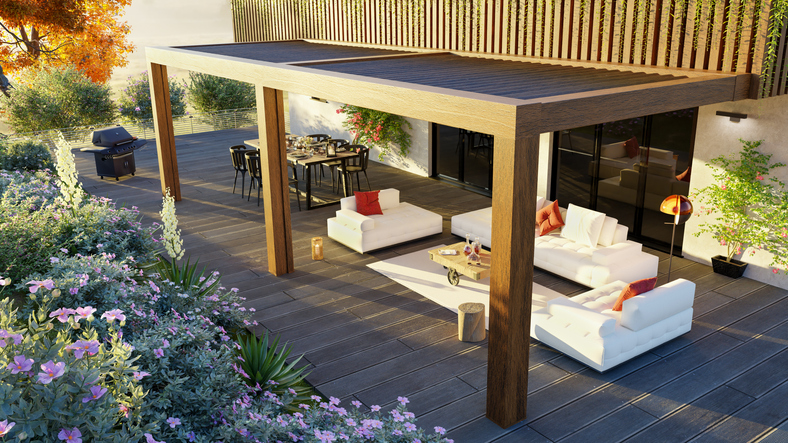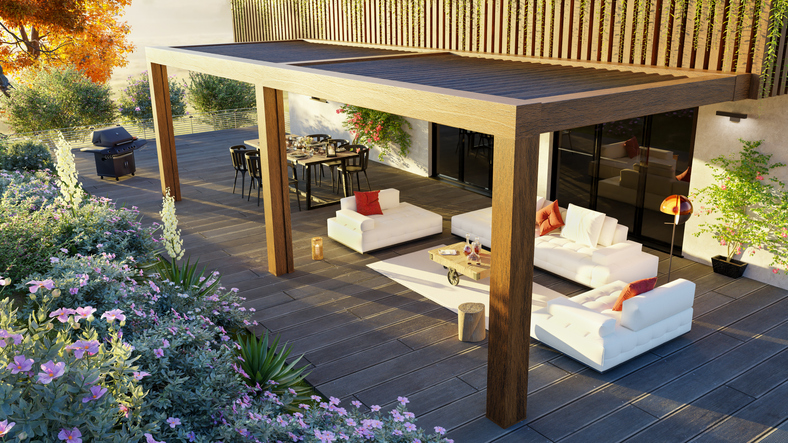
Creating accessible outdoor living spaces is an essential aspect of inclusive design that allows individuals of all abilities to enjoy the beauty and tranquility of outdoor environments. As we delve into the planning and execution of these spaces, we consider various design elements that cater to diverse needs, ensuring safety, comfort, and aesthetic appeal. For many homeowners, this initiative can be part of a larger home remodel, where indoor and outdoor environments are redesigned for both style and accessibility.
Adopting Universal Design Principles
The cornerstone of planning accessible outdoor living areas is adopting universal design principles. This approach focuses on creating environments that are usable by everyone, regardless of age or ability, without the need for adaptation. In practical terms, this means integrating wheelchair-friendly pathways, ramps with gentle slopes, and seating areas that are easy to access. These elements ensure that outdoor spaces are not only functional but also welcoming and inclusive.
Ensuring Pathways are Accessible
One of the critical considerations is the accessibility of pathways. These should be designed with firm, smooth, and slip-resistant surfaces such as concrete, pavers, or compacted gravel, making them navigable for people using wheelchairs, walkers, and other mobility aids. Additionally, pathways should be wide enough to accommodate wheelchairs comfortably, ideally following the ADA recommendation of a minimum width of 36 inches. Engaging a skilled general contracting team ensures these details are implemented with precision and long-term durability in mind.
Incorporating Ramps and Level Changes
For outdoor living spaces spanning multiple levels, ramps are indispensable. They facilitate smooth transitions between different elevations, ensuring everyone can move freely throughout the area. Ramps should feature non-slip surfaces, handrails for additional support, and a slope that adheres to ADA guidelines. Besides functionality, ramps can be designed to complement the overall aesthetic of the outdoor space, using materials and colors that blend seamlessly with the natural environment.
Focusing on Material Textures and Sensory Elements
Creating a sensory-rich experience is another aspect of designing accessible outdoor living spaces. This includes selecting materials with different textures for pathways and seating areas, which not only contribute to the safety and usability of the space but also enhance its visual and tactile appeal. For projects that support individuals with a range of abilities, accessible remodeling solutions are essential to meet modern needs with thoughtful, inclusive designs.
Designing Comfortable and Accessible Seating Areas
Seating areas should cater to varied needs, featuring sturdy, comfortable chairs and benches with backs and armrests. Creating shaded seating areas ensures these spaces are enjoyable even during the sunniest days, while ensuring furniture materials are durable and low-maintenance adds to the usability and longevity of the outdoor living space.
Let’s Start a Conversation!
At DreamMaker Bath & Kitchen of Southern Lakes, we understand the importance of creating outdoor living spaces that are accessible, beautiful, and functional for everyone. Our team of experts is dedicated to designing and executing projects that meet the highest standards of accessibility and aesthetic appeal. Whether you’re starting with a full home remodeling plan or enhancing a specific area, we’re here to support your vision every step of the way. Contact us at (262) 500-3689 or fill out our online form to schedule a consultation. Let’s create a dynamic outdoor space that welcomes everyone. We serve residents in Kenosha, Racine, Burlington, Lake Geneva, Pleasant Prairie, and surrounding areas.






